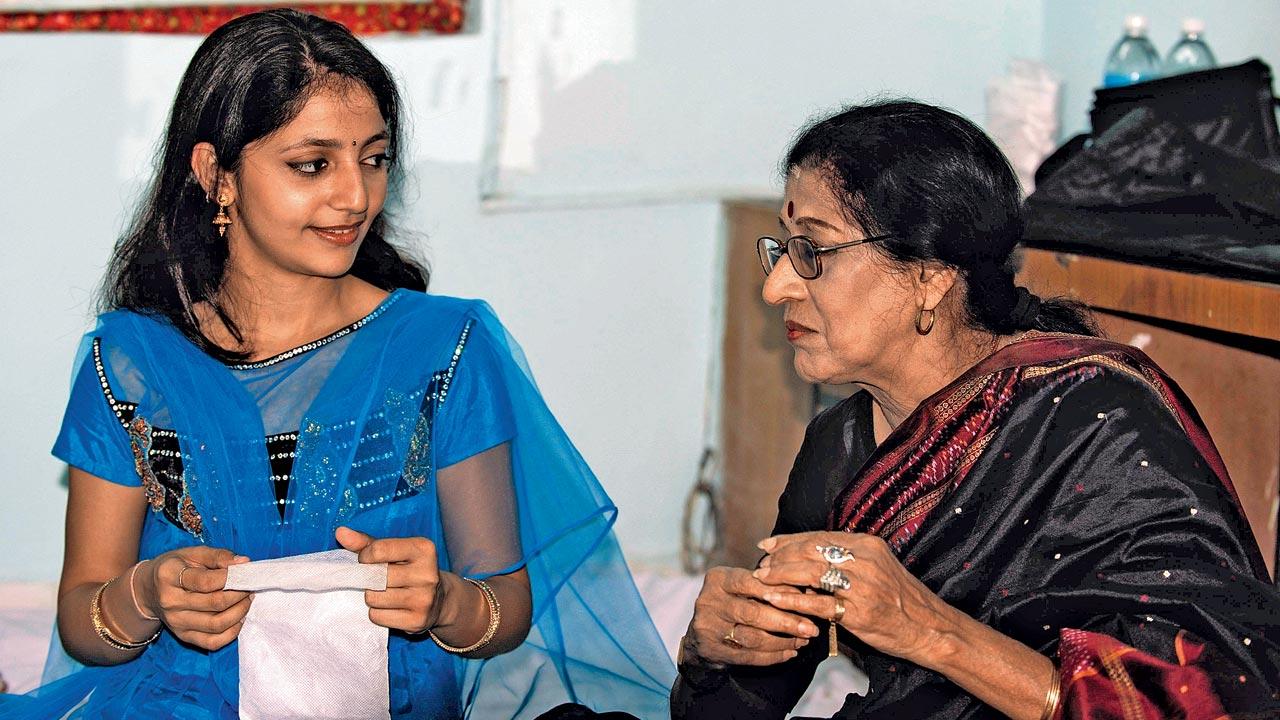Tejashree Amonkar’s upcoming performance seeks to revive the musical conversations between performer and audience, a throwback to the legacy of her late grandmother Kishori Amonkar

Tejashree Amonkar
There are artistes who evolve from being actual people to icons and later, legends. Their absence creates a vacuum that is filled with stories by admirers — often embellished, to leave listeners mesmerised. For the writer, listening to his uncle speak of the performances of the late Kishori Amonkar was one such instance. Yet, to Tejashree Amonkar, it is amusing at times to hear people in awe of her dear ‘ajji’ (Marathi: grandmother)
ADVERTISEMENT
To audiences of Hindustani and Indian classical music, the name of Kishori Amonkar carries with it memories of a complete vocalist whose control over technicality and power of the form was unmatched. “But I would often forget her public persona,” the 37-year-old reveals, adding that at home the great singer was a wife, mother and a doting grandmother. She also shares the amusing memory of the great doyen turning up for a grandparents’ meeting at her school to watch her sing ‘Ajeeb dastaan hai yeh’. We admit that is a side one would never expect of the late Padma Vibhushan-awardee who was known to be a disciplinarian on the stage.
 Tejashree (left) shares a moment with the legend
Tejashree (left) shares a moment with the legend
That Tejashree turned to pursue classical music should come as no surprise, even though she points out that it was never forced upon her. She learned from her grandmother, accompanying her on the stage, before starting out as a solo artiste. “As I started learning, I could relate more to the knowledge in her. She became more of a guru and less of a grandmother. But when I got married, I got my grandmother back,” the Mumbai-based singer recalls. For the wedding, Kishori Amonkar turned into the regular grandmother accompanying Tejashree on shopping trips and checking on the venue. The singer notes, “She’s my ajji, but so much more than that. How can I just say she is “my” grandmother, or “my” guru? She belonged to everybody.”
Yet, the traditional discipline the singer received shows up in her conversation and ideas about the upcoming event at G5A tomorrow. “A ‘baithak’ performance,” she describes, “is an intimate and lively interaction; a conversation between the performer and audience.” The event will eschew the ornamentations of technology that disconnects the audience from the performer. She explains, “The baithak gives the audience a taste of how performers feel and listen to music when we practise. It opens the audience up to the fine nuances. I feel that as a community we should promote more of these experiences.”
 Tejashree Amonkar (left) accompanying the late Kishori Amonkar on stage at a performance. Pics Courtesy/TejashreeAmonkar.com
Tejashree Amonkar (left) accompanying the late Kishori Amonkar on stage at a performance. Pics Courtesy/TejashreeAmonkar.com
The singer will be performing a bandish in the raag Raageshree. “The timing [of the performance] was such that it suited Raageshree. The raag has shringar ras. It is very decorative and ornamental,” she explains, adding that the bandish will combine the contrasts of melancholy and ornamentation in its structure.
Does the legacy bear heavy, we ask. “She knew and she did say, ‘They will expect you to sing like me.’ But there was no pep talk. She only said that you have to be the best because you have been privileged to learn from the best,” Tejashree observes of her guru.
Recalling a stellar advice, the singer says, “For her, music was one way or the other. Either you hit the right note, or you didn’t. There is no 80 per cent in tune. You are off tune.”
In the studios dominated by auto-tune, those words might feel dated. But in the quiet, intimate setting of a baithak, they are rules to live by.
ON October 19; 8.30 pm
AT G5A, Laxmi Mills Estate, Shakti Mills Lane, Mahalakshmi West.
LOG ON TO insider.in
COST RS 750
 Subscribe today by clicking the link and stay updated with the latest news!" Click here!
Subscribe today by clicking the link and stay updated with the latest news!" Click here!








